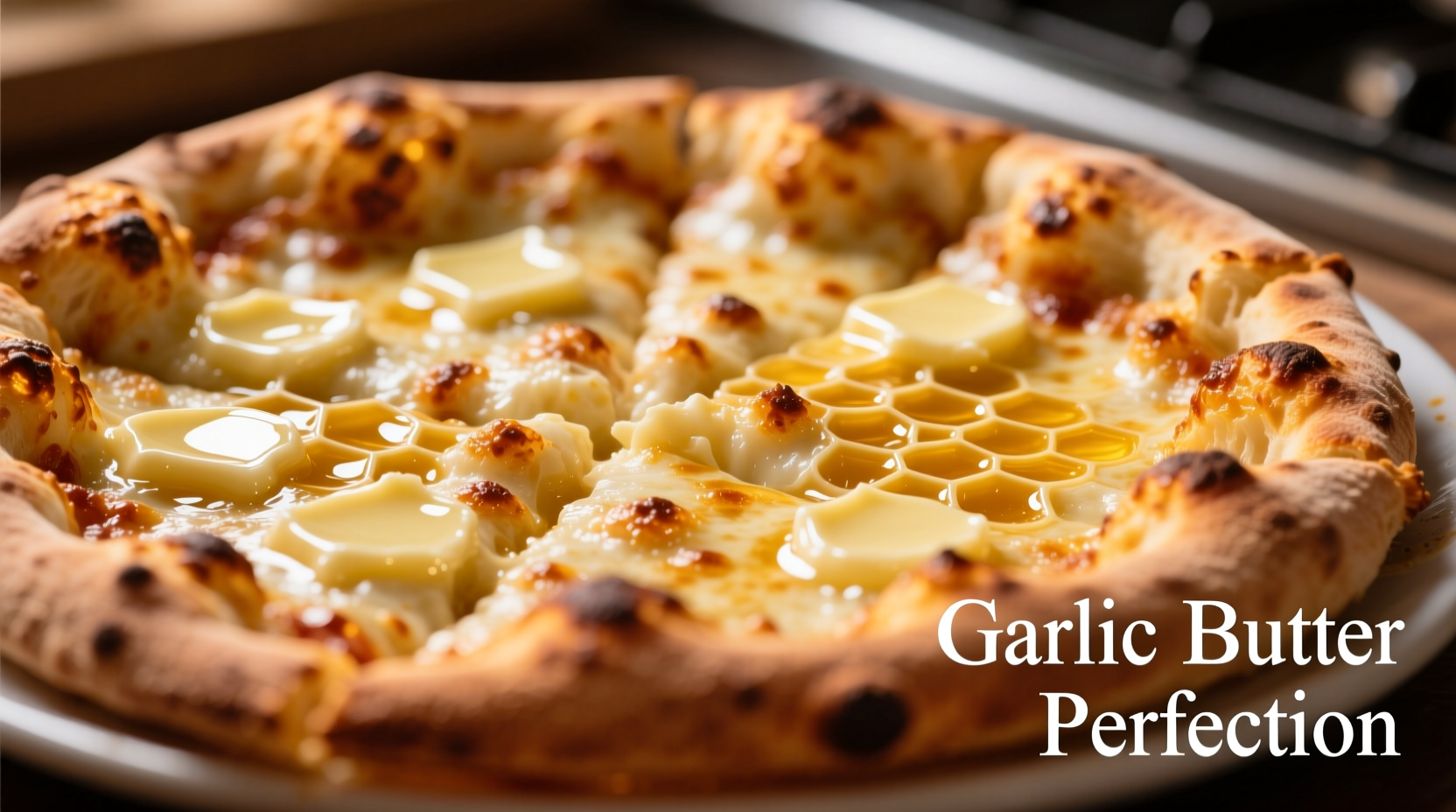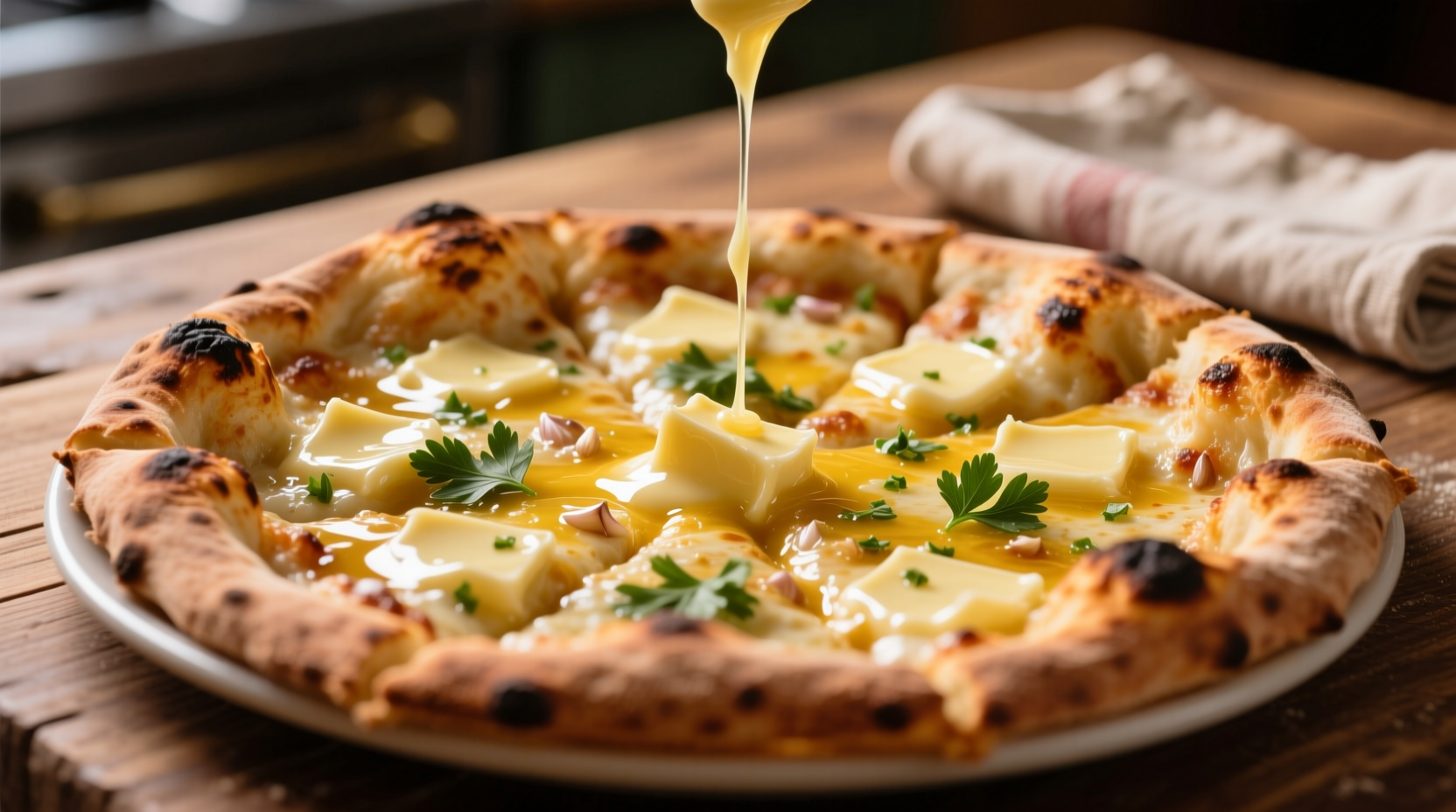The Secret to Restaurant-Quality Pizza Crust Finish
Nothing transforms a good homemade pizza into something extraordinary like the perfect garlic butter finish. Unlike store-bought alternatives that often burn or taste artificial, the right garlic butter formula enhances your crust's texture while adding that signature aromatic flavor without overwhelming your toppings.
Why Garlic Butter Makes All the Difference
Professional pizzerias use garlic butter for good reason. When applied correctly, it creates a delicate crispness on the crust edges while infusing subtle garlic notes that complement rather than dominate. The butter's milk solids caramelize during baking, producing that coveted golden-brown finish you see in high-end pizzerias.
| Ingredient | Professional Ratio | Home Kitchen Adjustment |
|---|---|---|
| Unsalted Butter | 4 parts | ½ cup (1 stick) |
| Fresh Garlic | 1 part | 2-3 cloves, finely minced |
| Dried Oregano | ¼ part | ½ teaspoon |
| Fresh Parsley | ⅓ part | 1 tablespoon, chopped |
Step-by-Step Preparation Guide
Follow this chef-tested method for flawless garlic butter every time:
- Softening butter correctly: Leave butter at room temperature for 30-45 minutes until pliable but not melted. Never microwave as this separates the milk solids.
- Garlic preparation: Mince fresh garlic finely or use a microplane for paste-like consistency. Avoid pre-minced garlic from jars which contains preservatives that affect flavor.
- Herb incorporation: Mix dried oregano with softened butter first to allow time for flavor extraction, then fold in fresh parsley at the end to preserve its bright flavor.
- Resting period: Let the mixture rest for 15 minutes before application to allow flavors to meld.
Application Techniques That Make the Difference
The timing and method of application significantly impact your results:
- Post-bake application: For most home ovens, apply garlic butter immediately after removing pizza from the oven. The residual heat melts the butter without burning the garlic.
- Pre-bake option: If using a pizza stone or high-temperature oven (500°F+), apply a thin layer before baking to create extra crispness.
- Brushing technique: Use a silicone brush to apply an even, thin coat along the outer ½-inch of crust. Too much butter can make the crust soggy.

Timing Considerations for Different Pizza Styles
Adjust your approach based on pizza type:
- Thin-crust Neapolitan: Apply after baking only - the delicate crust can't handle pre-bake butter application
- Deep-dish Chicago style: Apply half before baking (for crispness) and half after (for flavor)
- Whole wheat or gluten-free crusts: Apply after baking only as these crusts brown faster and burn more easily
Flavor Variations for Different Pizza Profiles
Customize your garlic butter to complement specific pizza styles:
- Mediterranean pizza: Add ½ teaspoon lemon zest and a pinch of red pepper flakes
- White pizza: Incorporate 1 tablespoon grated Parmesan into the butter mixture
- Meat lovers: Mix in ½ teaspoon smoked paprika for depth
- Vegan option: Substitute with high-quality vegan butter and add ¼ teaspoon nutritional yeast
Troubleshooting Common Issues
Fix these frequent problems with professional solutions:
- Burnt garlic: Caused by applying too early in baking process or using minced garlic that's too fine. Solution: Apply after baking or use garlic-infused oil instead of fresh garlic.
- Soggy crust: Results from applying too much butter. Solution: Use a pastry brush to apply a thin, even layer only on the very edge.
- Bland flavor: Often from using old garlic or insufficient resting time. Solution: Use fresh garlic and let the mixture rest 15 minutes before application.
Storage and Make-Ahead Tips
According to USDA food safety guidelines, garlic butter can be stored in an airtight container in the refrigerator for up to 1 week. For longer storage, the Culinary Institute of America recommends freezing in ice cube trays then transferring to freezer bags for up to 3 months. Never store garlic in oil at room temperature due to botulism risk as documented by the FDA's food code.
Why Fresh Garlic Outperforms Powdered Alternatives
Food science research from the Journal of Food Science shows fresh garlic contains allicin, the compound responsible for its characteristic flavor, which develops when garlic is cut or crushed. Powdered garlic lacks this enzymatic reaction, resulting in a flatter, less complex flavor profile. For optimal results, always use fresh garlic that's been properly prepared.
Professional Secrets for Maximum Flavor Impact
Master pizza chefs use these advanced techniques:
- Toast garlic cloves lightly in a dry pan before mincing to mellow the raw bite
- Add a pinch of sugar to the butter mixture to enhance caramelization
- Use European-style butter with higher fat content for better browning
- Let pizza rest for 2 minutes after baking before applying butter for optimal absorption











 浙公网安备
33010002000092号
浙公网安备
33010002000092号 浙B2-20120091-4
浙B2-20120091-4